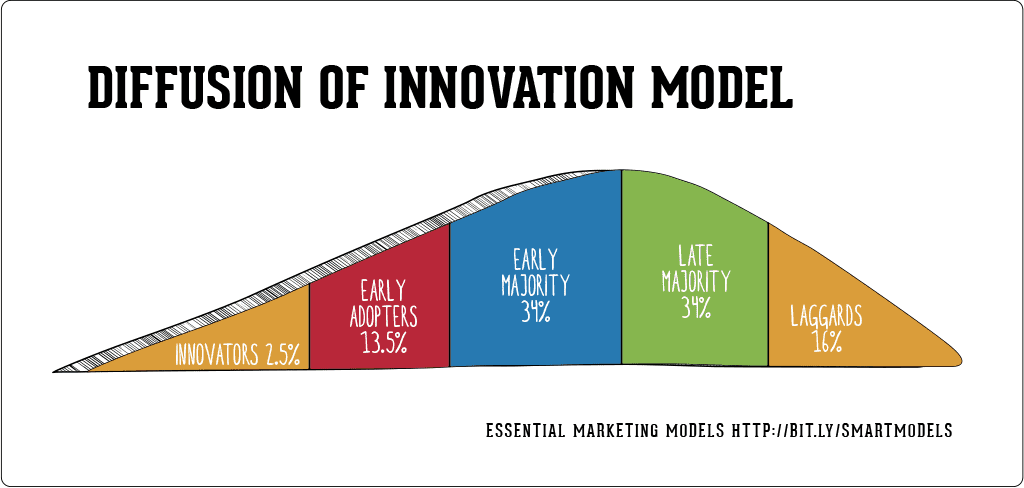Diffusion Of Innovation

Diffusion of Innovation Theory is the process by which an innovation is communicated through certain channels over time among the members of a social system.
When thinking of a technology that would fit well into the Diffusion Theory, I immediately thought of the Apple IPhone. The first Iphone came out in 2007 and it is a revolutionary mobile phone and a breakthrough internet communicator. The widespread adoption of the IPhone embodies many of the network and sociology principles in the diffusion theory.
The adoption curve that Apple made to show the diffusion of innovation:
Innovators – the risk takers, willing to deal with setbacks related to time, money and effort. They seed a diffusion process and contribute to the curve about 2.5 %. These are people who wanted to get the IPhone at its initial launch. They mark the beginning or the stage of product development in a picture of the phones. The already loyal Apple customers were informed through emails messages about the launch before it was actually launched. The rest of the customers in the innovators strata were targeted by PR’s, blogs and buzz marketing.
Early adopters: also called opinion leaders, and also change agents as they are responsible for fueling the diffusion process; they constitute about 13.5 %. In terms of plc graph these are the consumers located on the introductory stage. Targeted after launch through strategies like printed media, blogs-industrial forums, apple fan club, TV ads , banner ads, interactive ads, outdoor media, exhibitions, social media- like Facebook and Instagram.
Early majority: the cautious ones depending on the experience of the early adopters and contribute to about 34% of the graph. They are located in the growth stage of the cycle.
Late majority: are also skeptical and cautious, respond to peer pressure and society and contribute the same amount as the early majority does.
Laggards: the last movers, who adopt the technology when the technology has become a tradition of a kind and contribute to about 16% of the graph. They are usually located around the declining stage of a product.
The IPhone was not fully adopted overnight, however, it took over the cell phone market unlike any other phone manufacturer worldwide. This high rate of adoption and spread in diverse network environments suggests that there is a low threshold, which is directly relevant to the speed and effectiveness of diffusion in varying cluster densities.
` I personally feel its international launch strategy was commendable. It accelerated its adoption rate as is apparent by the application of the diffusion of innovation curve by applying the right marketing mix to satisfy the perceived attributed within the diffusion model and by way of advertisements that it used to target the innovators, early adopters and early majority- it used the push and pull strategy- promoting product by full spectrum advertising.

No comments:
Post a Comment